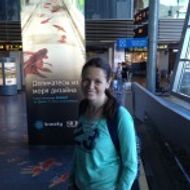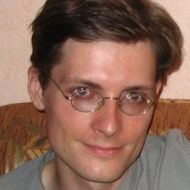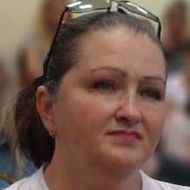- A
- A
- A
- ABC
- ABC
- ABC
- А
- А
- А
- А
- А
-
-
Departments
- International Laboratories
-
Educational Programmes
- Bachelor's Programmes
- Master's Programmes
- Doctoral Programmes
- Math in Moscow Programme
- REM and Summer University
-
Faculty
119048Moscow, Usacheva str., 6
phone/fax: +7 (495) 624-26-16
phone: +7 (495) 916-89-05
e-mail: math@hse.ru

Geometric Topology Seminar: Taras Panov
Math Department of the Higher School of Economics, Room 209
Thursday, October 19, 14:00
Speaker: Taras Panov (Moscow State University)
Title: Manifolds defined by right-angled 3-dimensional polytopes
Abstract: A combinatorial 3-dimensional polytope P can be realised in Lobachevsky (hyperbolic) 3-space with right dihedral angles if and only if it is simple, flag and does not have 4-belts of facets. This criterion was proved in the works of Pogorelov and Andreev of the 1960s. We refer to combinatorial 3-polytopes admitting a right-angled realisation in Lobachevsky 3-space as Pogorelov polytopes. The Pogorelov class contains all fullerenes, i.e. simple 3-polytopes with only 5-gonal and 6-gonal facets.
There are two families of smooth manifolds associated with Pogorelov polytopes. The first family consists of 3-dimensional small covers of Pogorelov polytopes P, also known as hyperbolic 3-manifolds of Loebell type. These are aspherical 3-manifolds whose fundamental groups are certain finite abelian extensions of hyperbolic right-angled reflection groups in the facets of P. The second family consists of 6-dimensional quasitoric manifolds over Pogorelov polytopes. These are simply connected 6-manifolds with a 3-dimensional torus action and orbit space P. Our main result is that both families are cohomologically rigid, i.e. two manifolds M and M' from either of the families are diffeomorphic if and only if their cohomology rings are isomorphic. We also prove that a cohomology ring isomorphism implies an equivalence of characteristic pairs; in particular, the corresponding polytopes P and P' are combinatorially equivalent. These results are intertwined with the classical subjects of geometry and topology, such as combinatorics of 3-polytopes, the Four Colour Theorem, aspherical manifolds, diffeomorphism classification of 6-manifolds and invariance of Pontryagin classes. The proofs use techniques of toric topology.
This is a joint work with V. Buchstaber, N. Erokhovets, M. Masuda and S. Park.
- About
- About
- Key Figures & Facts
- Faculties & Departments
- International Partnerships
- Faculty & Staff
- HSE Buildings
- Public Enquiries
- Studies
- Admissions
- Programme Catalogue
- Undergraduate
- Graduate
- Exchange Programmes
- Summer University
- Summer Schools
- Semester in Moscow
- Business Internship
-
https://elearning.hse.ru/en/mooc/
Massive Open Online Courses
-
https://www.hse.ru/en/visual/
HSE Site for the Visually Impaired
-
http://5top100.com/
Russian Academic Excellence Project 5-100
- © HSE University 1993–2024 Contacts Copyright Privacy Policy Site Map
- Edit





